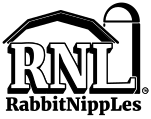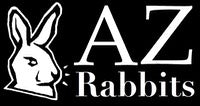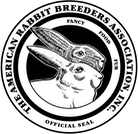We were recently given the opportunity to take over the main Altex herd that was originally developed by Dr. S.D. Lukefahr from Texas A&M. This was an opportunity that we couldn't pass up. We'd been very interested in this special breed for the last few years and were excited to make the long journey to Texas and pick them up. We were going to be getting the last of them, 15 mature breeding stock, some of which were the original breeders. They'd been kept in Dublin, Texas and were no longer located at Texas A&M. Dr. Lukefahr had given charge to another to take care of the stock.
But in order to do this, we had to make room in our own rabbitry. Because it seemed to be a unique opportunity not only to help grow this breed, but also help other breeders take advantage of their commercial quality strengths, we were very anxious to obtain the herd. So we sold off most all of our stock to make room. We were also going to drive down to Texas A&M in Kingsville, near Corpus Christi and pick up some other New Zealand Whites.
I contacted the breeders and inquired about their health, if they had any issues, history of snuffles, etc. They were described as clean and disease free. So after making the arrangements and getting the finances in order, it was off on the 2 day round trip. First down to Texas A&M, then further up north to Dublin. And what a long trip it was!
After loading up the Altex quite hastily (it was a 23 hour trip one way for the day, driving solo), it was off for home. Due to trying to get in and out and home in as reasonable a time as possible, the most important part of buying rabbits was missed. The inspection period.
After getting home, we started to unload the herd from the truck. Immediately I noticed what I failed to notice when picking them up. They were sneezing. Upon closer inspection, I noticed white snot and matted down front paws. A breeder's worst nightmare... pasturella (aka snuffles). Some showing signs worse than others, but all obviously sick or exposed. Obviously, they weren't going to be part of my rabbitry.
So there we were, a truck load full of sick Altex rabbits. All funds used for the trip, gas and purchasing costs were gone. Thank goodness the NZW's were transported in the cab of the truck while the Altex were transported in the bed of the truck, completely separated. They were still healthy and unexposed.
First thing we did was keep the healthy NZW's separated so they remained healthy. Then contacted the breeder to explain the situation. Come to find out, the breeder wasn't even aware of what pasturella or snuffles was, let alone the signs (he thought I meant "sniffles", as in a cold or something). We truly believe it was done out of ignorance, without any purposeful ill intent or to mislead or deceive. Nevertheless, they were sick with an incurable, highly contagious bacterial infection. And unfortunately, no refund was to be received, even though it was definitely the right thing to do. The herd was a total loss to us at AZ Rabbits and the investment costs were flushed down the drain.
But the good news is that we got some great stock from the Ozark line through Texas A&M with some amazing potential. The bad news is we lost a lot of money, the Altex rabbits, most of our old herd (from being sold beforehand) and about 8 months of income lost due to lost breeding. Our new line of rabbits was still young and not ready to breed.
So why write this blog? So others can learn from this situation. NEVER rely on the word of others when it comes to their rabbits. Whether they are hiding the truth or just simply ignorant to the true health of the rabbits, all too often things are different than expressed. Most often it's through ignorance and not dishonesty. ALWAYS assume rabbits you obtain are sick or exposed. If you do this, you will quarantine all new rabbits before they are introduced to your rabbitry. It's a smart habit to get in to.
Watch new rabbits closely for at least 30 days. Watch for snotty noses (particularly white snot), matted front paws, drainage from the eyes (weepy eye or other ailments), ear mites, diarrhea, etc. Ear mites is an easy fix. But if they have signs of pasturella, cull immediately, sanitize area and use Vanodine V-18 (in proper diluted amount) to spray down rabbits that were anywhere near the infected ones (or even if they weren't). Then watch the others like a hawk. Spend time just hanging out with them, listening, watching and observing behavior. Any reputable breeder who has been involved with rabbits for any reasonable length of time will verify this.
When you are in the rabbitry where you're buying your rabbits from, listen for any sneezing. However, don't assume all sneezes are pasturella. Rabbits get easily agitated by dust and other factors, so be aware of the situation as well. Don't jump to conclusions without observing the whole situation. But at the same time, paranoia will offer protection. Walk on the side of caution and you'll come out ahead in the end. It's an unfortunate thing, but it's the reality of it all.
Recently, I visited a couple larger rabbitries here in Arizona, considering some new stock to add to my breeding program. When doing so, I immediately noticed the sneezing, white snotty noses, matted paws, etc. They were overwhelmed with this issue and didn't even know it. Just standing there for a few minutes, sneezes were ringing all throughout the rabbitries. I did my best to help them understand what they were dealing with, but really there wasn't a lot they could do with their current infected herd. It was too late.
There is no effective cure currently available for pasturella. Some may be effective in hiding the symptoms, but not curing the problem. This highly contagious bacterial infection always returns. The only way to fix the situation is to cull, cull, cull and start fresh. Disinfect and prevent. And there is so much misinformation on the internet from so-called "experts" that it's ridiculous. Most is flat out wrong or misinterpreted. Be careful. This issue isn't in most herds as they say. You can get clean stock and should demand such in your own rabbitry.
And as far as I know, these infected rabbitries are still selling breeding stock to the public. I'll not drop names here, but please be careful when purchasing rabbits and observe their rabbitries. The rabbitries do have an ethical and moral duty to sell healthy rabbits, but the buyer also has a duty to do their due diligence and take necessary precautions as well.
Could quarantine have helped in our situation with the Altex? No. We didn't have any exposure to the other healthy rabbits as we saw the issue immediately. The trip and purchase of the Altex was a gamble and we lost. But it was a good lesson in purchasing rabbits and the health of rabbits obtained from others, when told they were healthy. Even from those who you'd think would be healthy.
And on a positive note, it did give us an opportunity and excuse to sanitize, paint and essentially remodel our rabbitry as a preventative and highly paranoid measure. By the time we were done, it was clean enough to eat off the walls and cage floors (not that that'd be a temptation to try). Once you've seen what disease can do to others' rabbitries, you take the preventative measures to ensure it never happens to your own. We encourage others to do the same on a regular basis as a preventative and overall healthy habit. Quarantine new rabbits, keep your rabbitry clean and be observant! Sanitize often both with bleach (we go through gallons at a time) and Vanodine V-18. And take caution when adding rabbits to your rabbitry.
For now, we're just grateful to have the healthy, disease free stock we have. Many other rabbitries (as we recently observed) don't even have that. We will take extreme caution if we ever decide to add to our herd in the future. And we look forward to educating others and offering clean breeding stock to their rabbitries as well.
AZ Rabbits


